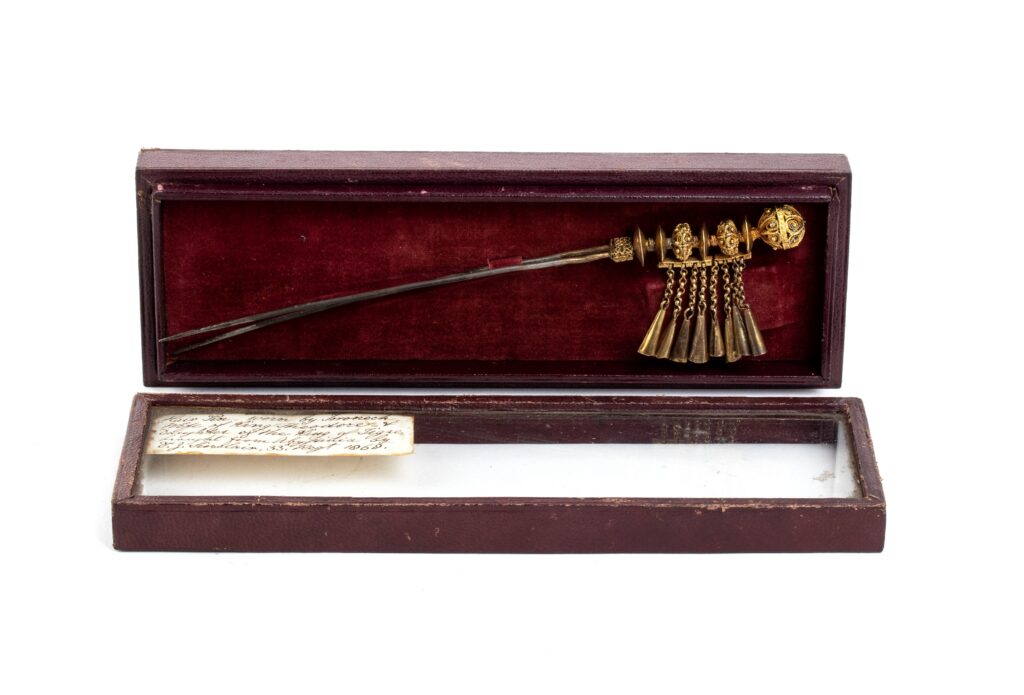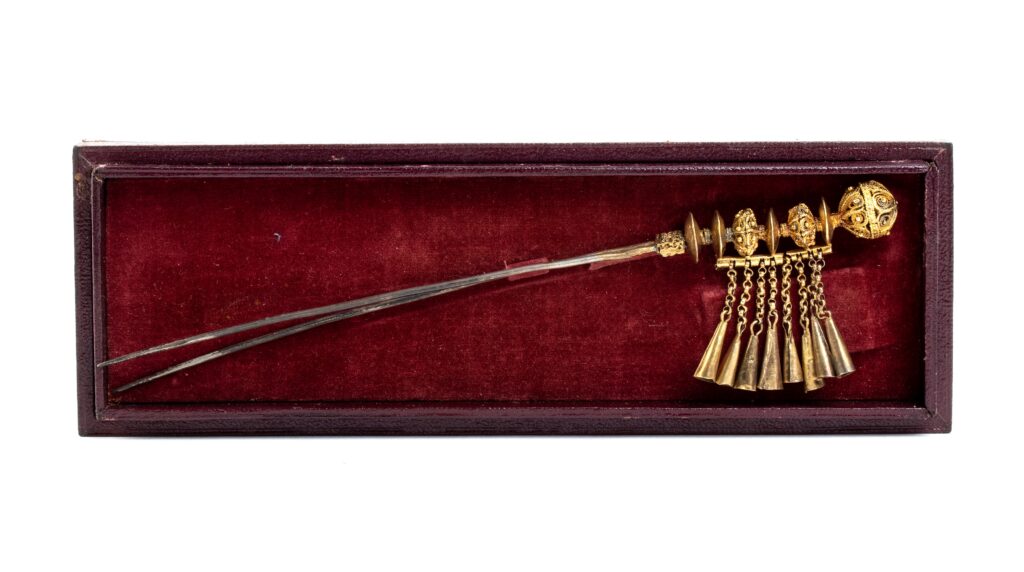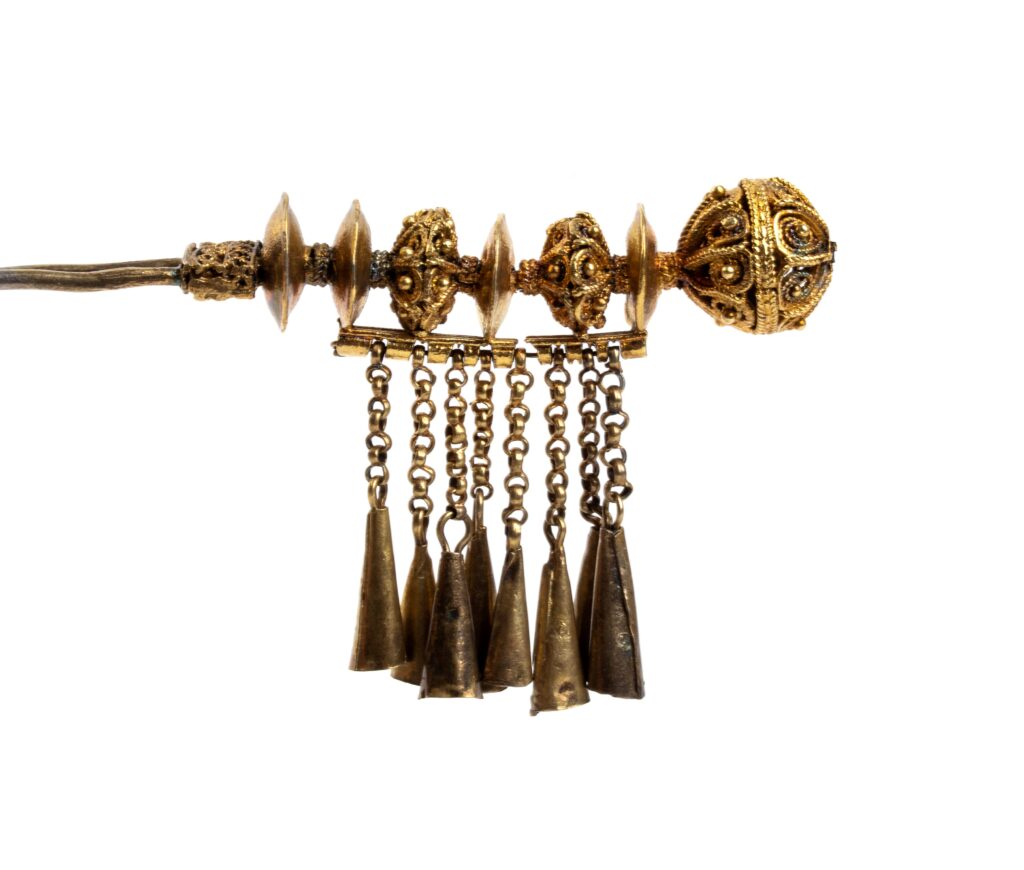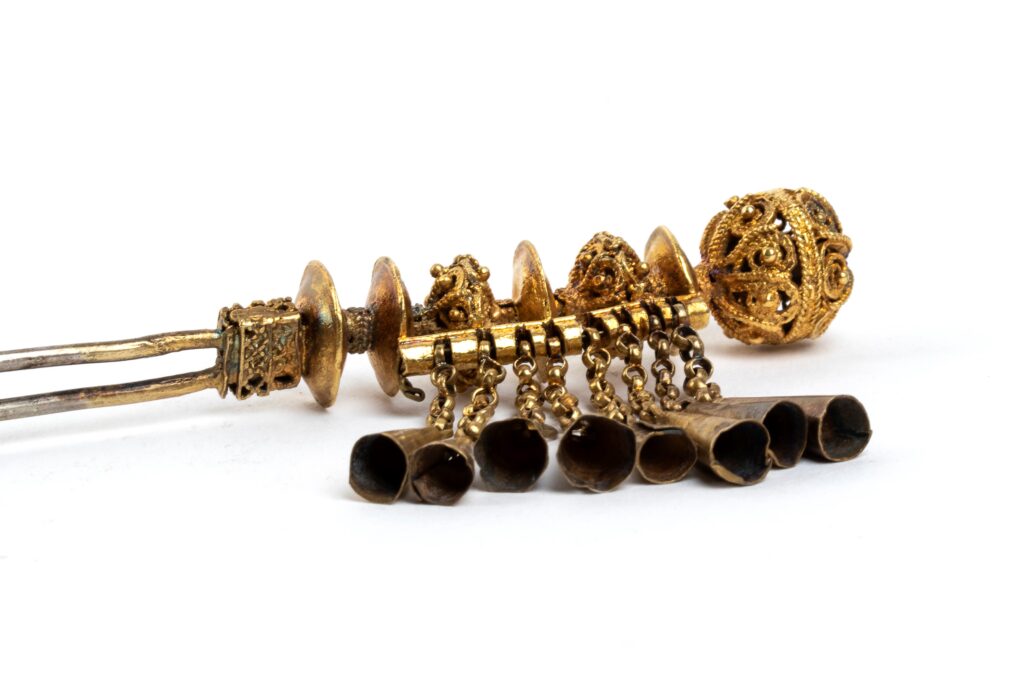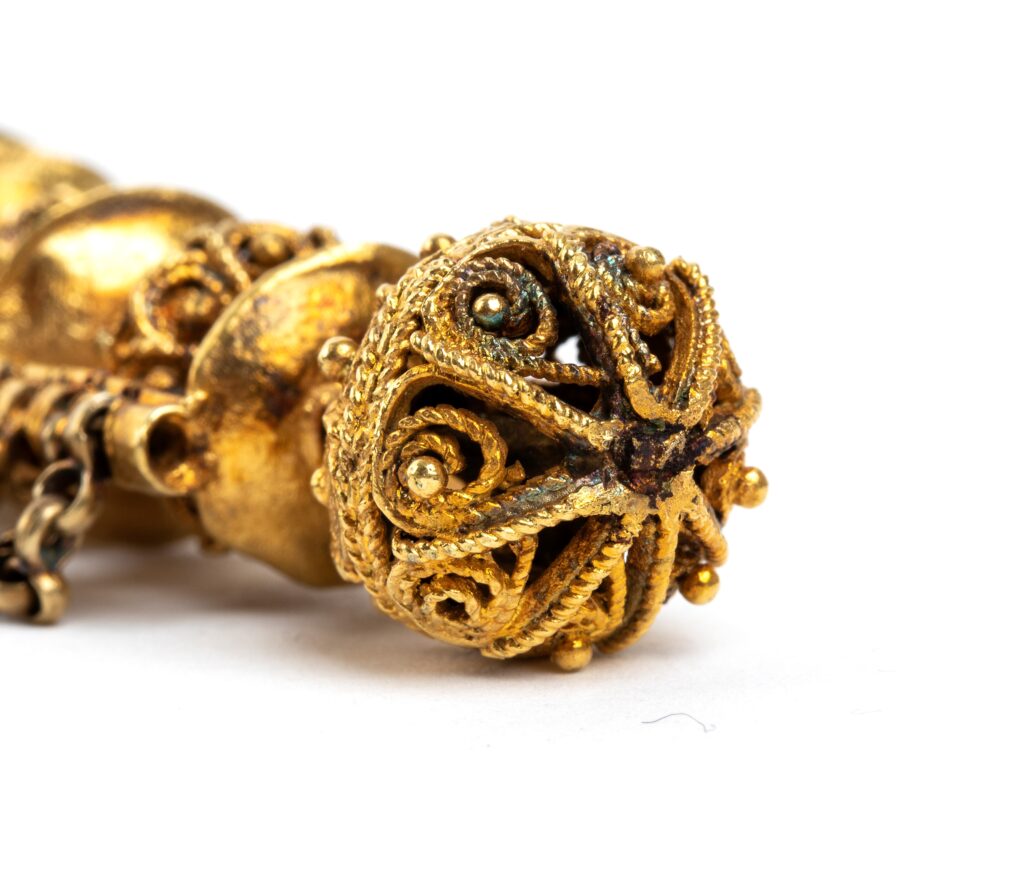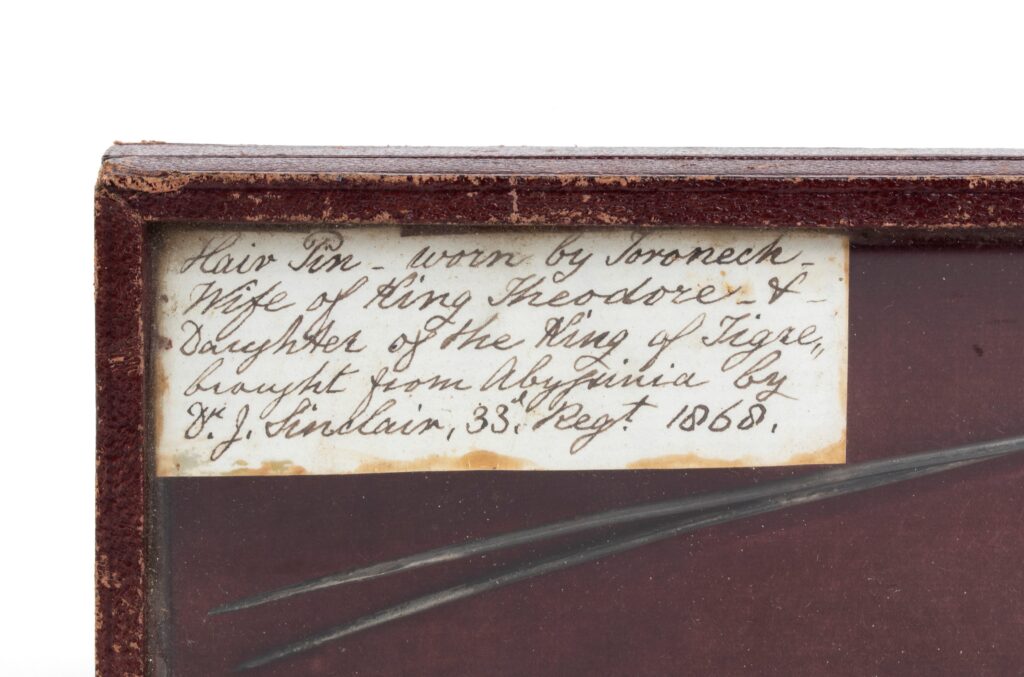Put up for sale by Bertolami Fire Art in its auction CURIOSITIES FROM EUROPEAN AND ORIENTAL ART SILVERS, IVORIES, CORALS, ICONS AND WUNDERKAMMER PALAZZO CAETANI LOVATELLI, ROME, WED 11 JUNE 2025
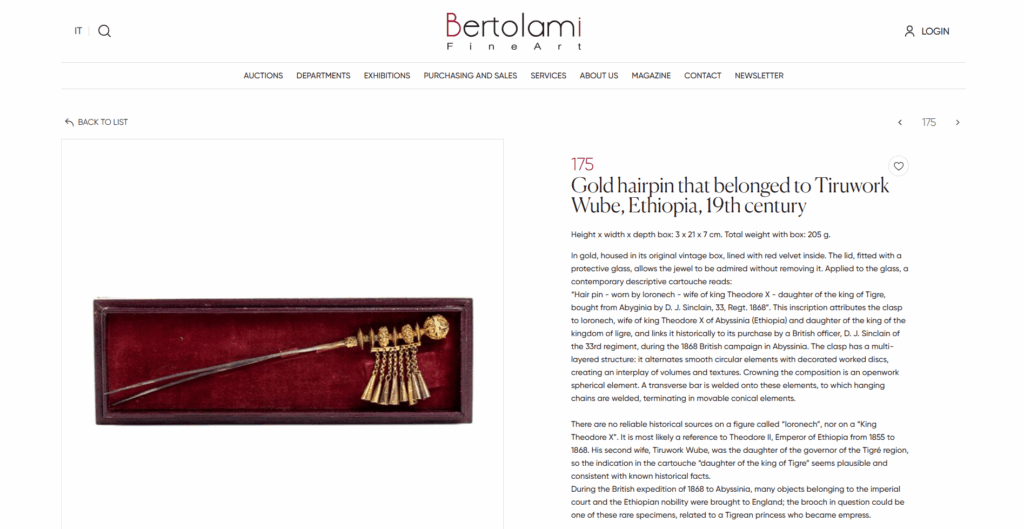
175
Gold hairpin that belonged to Tiruwork Wube, Ethiopia, 19th century
height x width x depth box: 3 x 21 x 7 cm. Total weight with box: 205 g.
in gold, housed in its original vintage box, lined with red velvet inside. The lid, fitted with a protective glass, allows the jewel to be admired without removing it. Applied to the glass, a contemporary descriptive cartouche reads:
“Hair pin – worn by Ioronech – wife of king Theodore X – daughter of the king of Tigre, bought from Abyginia by D. J. Sinclain, 33, Regt. 1868”. This inscription attributes the clasp to Ioronech, wife of king Theodore X of Abyssinia (Ethiopia) and daughter of the king of the kingdom of Iigre, and links it historically to its purchase by a British officer, D. J. Sinclain of the 33rd regiment, during the 1868 British campaign in Abyssinia. The clasp has a multi-layered structure: it alternates smooth circular elements with decorated worked discs, creating an interplay of volumes and textures. Crowning the composition is an openwork spherical element. A transverse bar is welded onto these elements, to which hanging chains are welded, terminating in movable conical elements.
There are no reliable historical sources on a figure called “Ioronech”, nor on a “King Theodore X”. It is most likely a reference to Theodore II, Emperor of Ethiopia from 1855 to 1868. His second wife, Tiruwork Wube, was the daughter of the governor of the Tigré region, so the indication in the cartouche “daughter of the king of Tigre” seems plausible and consistent with known historical facts.
During the British expedition of 1868 to Abyssinia, many objects belonging to the imperial court and the Ethiopian nobility were brought to England; the brooch in question could be one of these rare specimens, related to a Tigrean princess who became empress.
Estimate: € 700,00 / 900,00
Starting price: € 440,00
